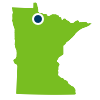
Site Highlight: Red Lake Peatland SNA
Steve Stucker, Minnesota Biological Survey Ornithologist
|
The vast Red Lake Peatland SNA is split into two units, one of which can be seen from highway 72 when heading north from Waskish, across Minnesota’s “big bog”. The more remote western unit, by itself Minnesota’s largest SNA, is not visible from any road and contains the so-called western water track – a remarkable 22-mile long “river” of sedges.
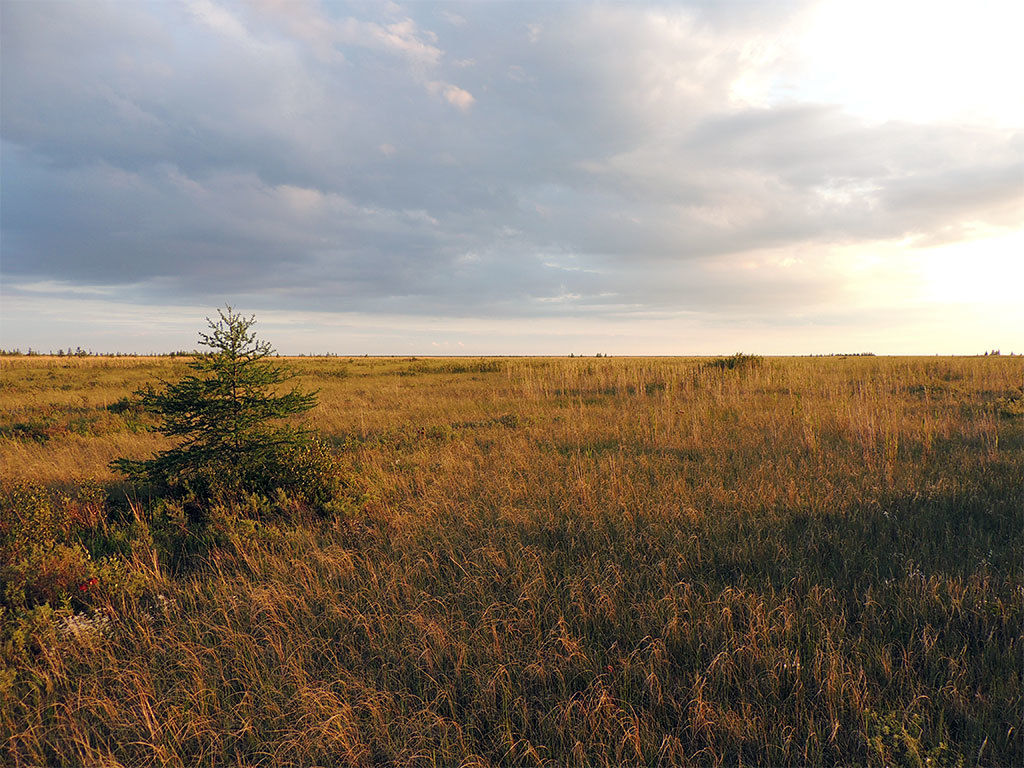 The western water track at Red Lake Peatland SNA. Photo by Steve Stucker.
Having seen the western water track on aerial photographs for years, I had dreamt of going there to experience it for myself. I wanted to do it under my own power, though, in peace and quiet. Very few people have visited Red Lake Peatland SNA’s western water track at any time of year. In winter, buried under a blanket of snow, it is hard to imagine the SNA at the height of summer. The slosh and squish of water, songs of birds, and most of all the buzz and whine of hordes of deer flies and mosquitoes. Most DNR researchers who have visited the water track during the summer months have used a tracked amphibious vehicle on a snowmobile trail that leads to a corner of the SNA or been flown there by helicopter.
In June of 2017, I hiked to the water track on the wet, mucky snowmobile trail, the only “easy” access point, wearing knee-high rubber boots and carrying a heavy waterproof backpack. After a 4+ -mile slog, only going over the tops of my boots once or twice, I left the trail behind for a final mile-long off-trail battle through dense shrubs and scrubby tamarack. Accompanied by an angry horde of deer flies, I finally reached the open expanse of sedges at the edge of the western water track. Even from the extreme southeast corner of the water track, the view was amazing – an undisturbed expanse of sedges, shrubs, and the occasional tamarack or black spruce stretching to the horizon and beyond.
Since I planned to listen for Yellow Rails and Nelson’s Sparrows, both of which call at night, I set up a minimalist camp (by special permit), near the edge of the fen. I heard a Nelson’s Sparrow singing nearby as I set up my tent. With no trees large enough to hang food out of reach of bears, I placed a bear-proof food container on the ground 100 feet away. After dark, the chorus accompanying the persistent Nelson’s Sparrow included American Bittern, Wilson’s Snipe, Sedge Wren, Le Conte’s Sparrow, and, unfortunately, clouds of hungry mosquitoes. I never did hear Yellow Rails that night, and with rain moving in the next evening, I hiked out the following morning. I hope to return for a longer visit, searching for Yellow Rails in other parts of the water track. That helicopter ride is sounding better and better though!
A hike into the water track is a true wilderness experience and should be explored carefully to avoid impacts to this sensitive area (see SNA visiting guidelines). Only experienced backcountry enthusiasts should even attempt going, with proper safety precautions, such as a means of water purification, a first aid kit, and perhaps an emergency satellite messenger/phone.
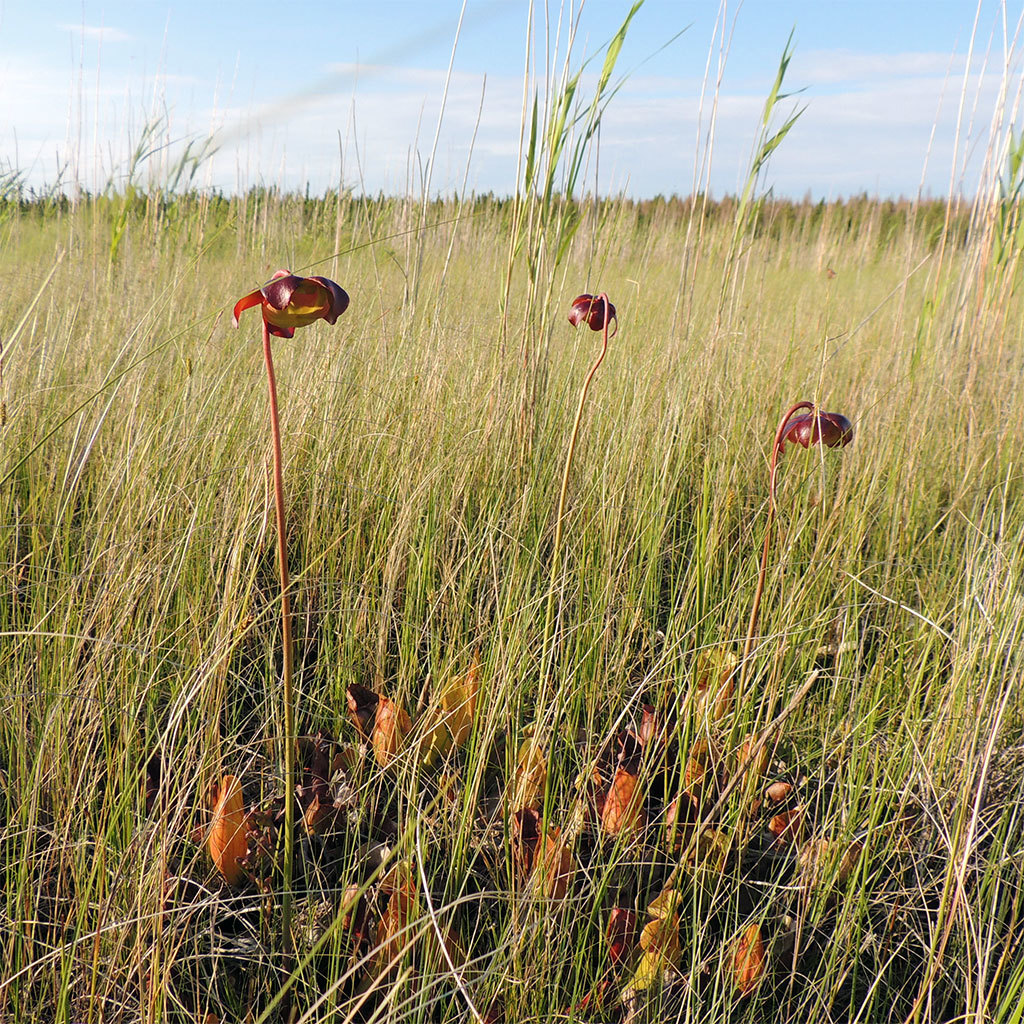 Sedges and pitcher plants at Red Lake Peatland SNA. Photo by Steve Stucker.
This SNA, like other peatland SNAs, is largely free of the widespread system of ditches created in the early 1900s in a failed attempt to drain the big bog. The unhindered flow of water and nutrients support numerous rare plants that still thrive in pristine peatland habitats. English sundew grows so densely in some parts of the water track that one must walk very carefully to avoid stepping on these carnivorous plants. Yellow Rails and Nelson’s Sparrows, both species of Special Concern, depend on these sedge wetland habitats. Although not found during my visit, other researchers have heard Yellow Rails at two locations in the water track in recent years.
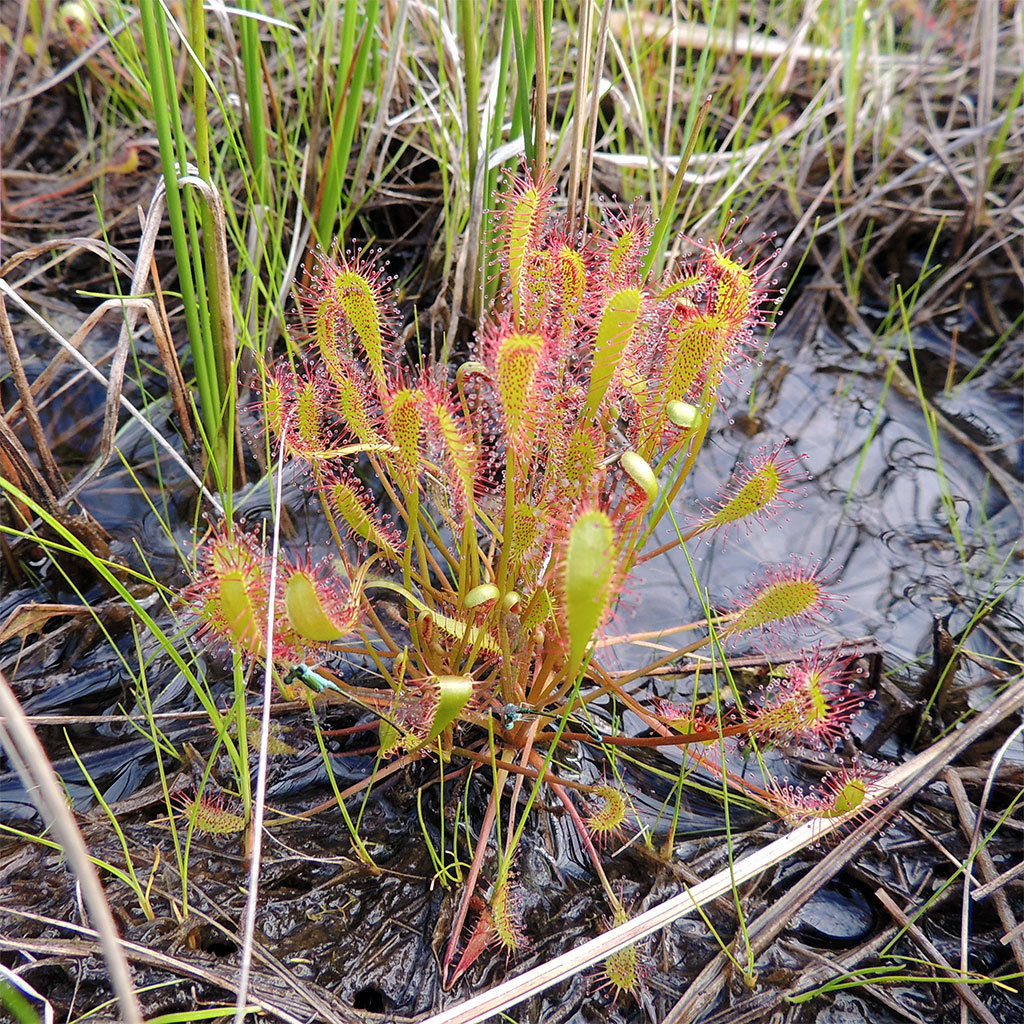 English sundew in the western water track at Red Lake Peatland SNA. Photo by Steve Stucker.
A few facts about Red Lake Peatland SNA:
- With two units totaling 87,580 acres, the Red Lake Peatland is Minnesota’s largest SNA.
- In recognition of its significance, the legislature enacted the Wetland Conservation Act of 1991 (article 8, section 2) established this SNA, and 17 others, across the northern reaches of Minnesota.
- The dominant habitat on the SNA is Graminoid Rich Fen (Water Track) with teardrop-shaped islands of Rich Tamarack Swamp.
Back to top

Staff Highlight: Bill Bleckwenn Returns to the SNA Program
Bill is the new Statewide (Land) Acquisition Coordinator of the SNA Program. Bill’s career with the DNR began in 2012 as the Principal Planner for the Strategic Land Protection Plan for SNAs. In addition, he has been a planner for the State Wildlife Action Plan, and a Senior Acquisition Project Manager at the DNR. Prior to the DNR, Bill worked as a licensed landscape architect and natural resources and urban planner for several decades.
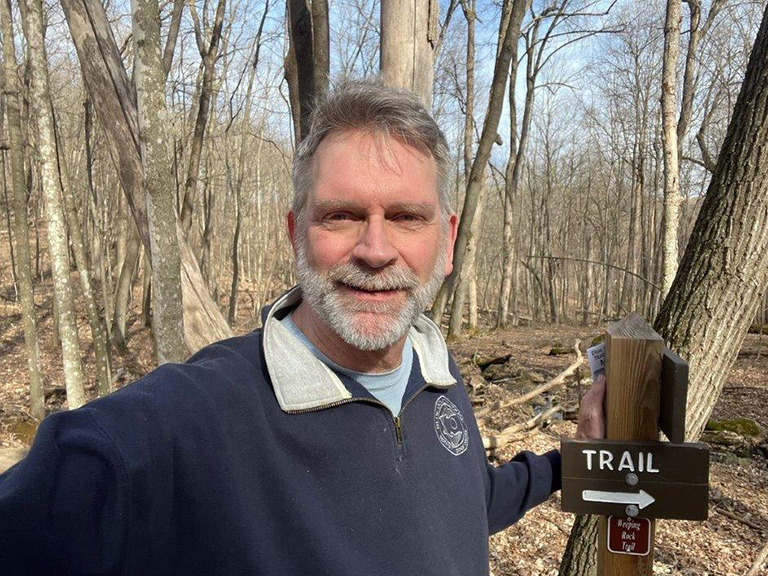 Photo courtesy of Bill Bleckwenn.
What gets you excited about your work?
There are so many things. The prospect of preserving intact habitats, rare species, and rare native plant communities is highly motivating for me. My new position allows me to use so many of my skills as a planner, biologist, and landscape architect. With Minnesota as my adopted home of almost 40 years, I love being able to return the favor back to the people of Minnesota by assisting in preserving its landscapes. Minnesota has been very good to me, and I want to contribute to its greatness. Having left a career in medicine, I believe that I am doing more good in this career in natural resources, as my work not only benefits the health and welfare of people, but of so many other species too. Being able to visit sites and unique habitats that I may never have been aware of is also a huge perk of this job. There are always special corners of Minnesota to discover. In addition, I can’t say enough about my DNR colleagues: goal-oriented, highly motivated, intelligent, like-minded, and just a lot of fun to be with in the office and outside of work. I feel blessed.
What is your favorite way to spend time outdoors?
As I get older, the way that I spend time outdoors is evolving. Hiking, skiing, biking, tennis, nature study, and whitewater canoeing were my go-to activities for years. However, I’m favoring lower-impact activities these days, with focuses on hiking combined with nature study and invasive species removal, gardening, and biking. I’m hoping to reconnect with a childhood love of fishing in retirement. My gardening also continues to evolve as our gardens at home are becoming more pollinator-oriented, with some spectacular results. How I love to see our gardens literally moving with swarms of butterflies, hummingbirds, bumblebees, and pollinator wasps. I hope that people will prioritize that instead of the weed-free aesthetic that regrettably has been the suburban standard. During other seasons, I’ve always loved winter, and one of my favorite things to do is snow-shoveling—crazy, isn’t it? Just like I take pride in a freshly weeded garden, or a mowed lawn in the summer, I take pride in the look of a freshly shoveled driveway with sculpted snow mounds in winter. We all have our ways of coping with winter!
What is your favorite SNA?
A favorite SNA? I’ll have to go with my gut on this one, since as I start to think about it, more SNAs rise to the top. King’s and Queen’s Bluff SNA is a long-term favorite of mine. Since I moved to Minnesota, the Mississippi River Valley has always been an appealing destination and King’s and Queen’s Bluffs (and adjacent Great River Bluffs State Park) has it all: dramatic landforms and views, excellent birding, goat prairies, hardwood forests, and relict white cedars typically seen much farther north. A close second for favorite SNA is Sugarloaf Point on the North Shore. I love its solitude and geological story. I worked on the restoration over 20 years ago before my career at the DNR. I learned several things from that project: using site inventories of the few other coastal wetlands as a basis for restoration, working with soil scientists to uncover the historical soils and seedbed that existed prior to filling for its conversion to a transfer station during WWII, and the resilience of native species to germinate after being buried for over 50 years. A true story of the power of renewal of nature.
Back to top
Cattle Doing Conservation, Round Two
Tyler Larson, Northwest Region SNA Natural Resources Specialist
This is an update to a story published in the 2021 winter issue of Nature Notes.
Prairie Smoke Dunes Scientific and Natural Area, located in Norman County, is the first SNA in the Northwest Region to implement cattle grazing as a management practice.
The project’s main objective is to enhance the grassland reconstruction here by increasing the site’s native species diversity. Project leaders hope to see an increase in grassland forbs (wildflowers). Grazing can also assist in reducing some grass species, whether it’s nonnative cool season grasses or native warm season grasses, such as big bluestem which can become dominant. Introducing cattle into restorations can help more species have a chance to compete.
Other objectives for grazing include increasing nutrient cycling and reducing build-up of dead plant material. Additionally, grazing compliments other management activities such as prescribed fire, invasive species treatments, inter-seeding and mowing.
 Cattle graze at Prairie Smoke Dunes SNA in the summer of 2022. Photo by Kelly Randall.
Prairie Smoke Dunes is a mosaic of wet-brush prairie, oak savanna with sand dune features, sedge meadow and hardwood forest. A constant battle is being played out between the woodland areas and savanna/prairie as trees march into open areas. Grazing aims to slow woody encroachment and maintain the land’s mosaic of features.
This year, 2022, was the second grazing season on the 300-acre prairie restoration. The cattle were onsite from the middle of June through the end of September. Observations seem to be showing that the grazing is having positive impacts for the grassland. Although actual data collection for the comparative analysis will not be measured until 2024 there are some changes happening worth noting.
There has been a noticeable increase in overall forb abundance and a definite reduction in dead plant material build-up. Also, the dense patches of reed canary grass are showing some structural diversity and thinning which should provide opportunities for other plant species to colonize. The ever-invading trees and shrubs are continuing to be consumed and trampled by the cattle as well.
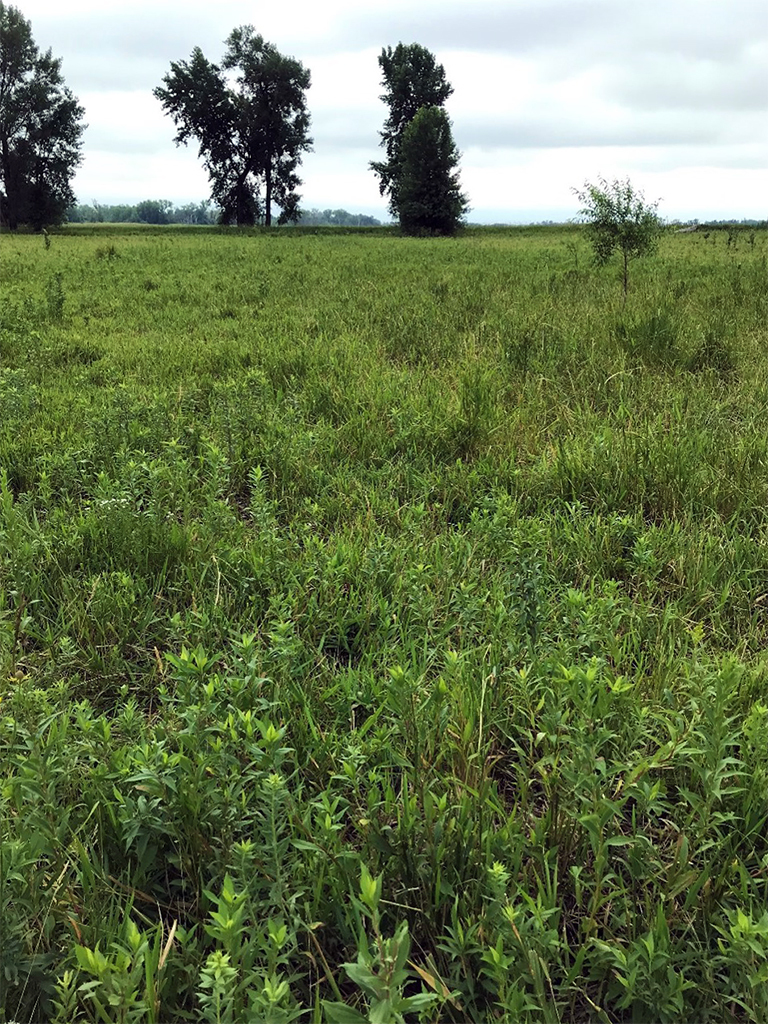 A large patch of reed canary grass grazed at Prairie Smoke Dunes SNA in the summer of 2022. Photo by Tyler Larson.
There are some adjustments planned for 2023. The cattle have been grazing the warm season grasses a little too well. These are located on the drier ridges of the restoration area and the vegetation is highly palatable, so cows inherently spend a lot of time there. The 2023 strategy will be to increase grazing pressure earlier and later in the season to put more pressure on undesirable non-native cool season grasses and limit mid-season grazing. This will provide rest and promote native species growth during this time of year. Plans have begun to include another area of the SNA into the grazing rotation. This will provide more flexibility for timely rotations of rest to benefit the current grazed area all while providing grazing benefits to more of the SNA.
Long-term goals are to implement a permanent rotational grazing system throughout the entire 1280 acres at Prairie Smoke Dunes SNA to maintain its diversity and historical balance of grasslands and woodlands.
Back to top
The Minnesota Conservation Explorer
The Minnesota Conservation Explorer is an online tool to enhance the delivery of Minnesota’s natural heritage data. It can be used to explore available data for conservation planning as well as request a project review to assess potential impacts to Minnesota’s rare features.
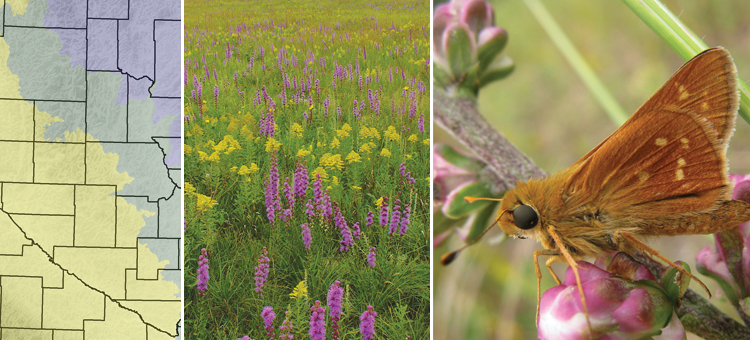 Back to top
Notes from Site Stewards
Site stewards monitor SNAs across Minnesota. Their observations provide valuable information to the SNA Program. Here are some interesting notes from recent reports.
-
Pine Bend Bluffs SNA, one of the most visited SNAs in the Twin Cities area, has had an influx of trash on the site. Site steward Mary Kay Lynch has diligently visited the site the last several months to do as much trash removal as she can. Please remember to practice leave no trace when you visit SNAs and any other natural area.
-
Steven Gahm, along with Tom Rice (site steward at Chamberlain Woods SNA), spent 3.5 hours on October 26 and again on November 1 cutting and stump treating buckthorn and honeysuckle near the northeast corner of Townsend Woods SNA. This is part of an ongoing multi-year volunteer effort. The rest of this SNA is largely free of these invasive species.”
- On October 21 Nick Belcher, one of the program’s newest site stewards at Black Lake Bog SNA, reported damage to the SNA’s wood-routed sign caused by a firearm. While hunting is allowed at this site, we would prefer signage to not be used as target practice.
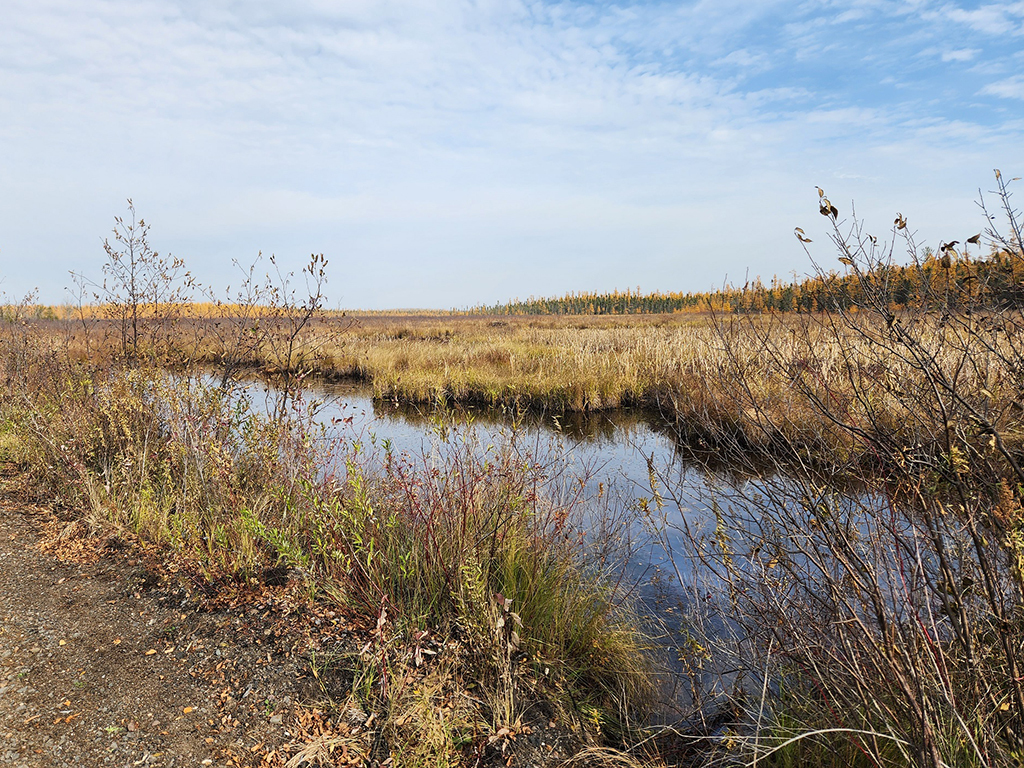 Black Lake Bog SNA. Photo by Nick Belcher.
Back to top

SNA Events
Looking for a unique winter experience? Get out and explore an SNA at one of these events. A full up-to-date list can be found on the SNA events calendar.


|